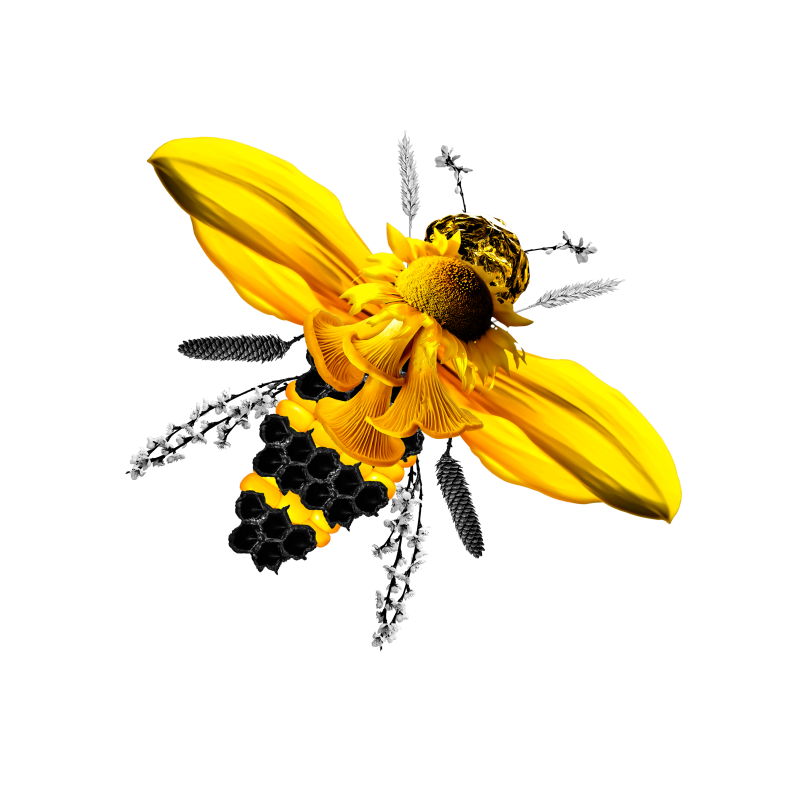Diversity of Life
As a future-oriented exhibition format of the province of Styria, SHOWING STYRIA has set itself the task of addressing current and burning issues of the present using Styria as an example by highlighting its historical developments as well as drafting options for the future and putting them up for discussion. In addition to a central exhibition location, the biennial SHOWING STYRIA is also present beyond the state borders with a mobile exhibition element.
Probably the greatest challenge of our time is the change of our planet caused by human intervention. Its negative effects on the climate, the diversity of species and habitats and thus on our basis of existence are omnipresent today. Accordingly, SHOWING STYRIA deals with biodiversity and climate change with the title "Diversity of Life". The mobile pavilion is dedicated to climate change with artistic perspectives, among others on the earth's atmosphere.
The approximately 350-year-old, landmarked barn, which previously housed parts of the Gironcoli Museum, is home to the House of Biodiversity. In conjunction with natural sites along the Path of diversity in the Herberstein Animal World, visitors are offered an exciting interactive exhibition on biodiversity.
Biodiversity as part of SHOWING STYRIA
The new House of Biodiversity at Herberstein Animal World invites visitors to marvel at and discover the wonders and numerous achievements of natural diversity.
How is biodiversity created? Why is it so important for our existence and what can each individual contribute to the protection of functioning ecosystems?
This is communicated in the House of Biodiversity and in the outdoor stations in a playful, interactive, exciting and sometimes surprising way. The concept envisages long-term operation extending well beyond 2023. It also includes permanent observation of local biodiversity using scientific methods (biodiversity monitoring).
What is biodiversity?
Since the origin of life around 4.5 billion years ago, a wealth of different life forms has developed. This abundance of species is part of biodiversity. The different genetic variants within these species and the diversity of ecosystems are further building blocks of biodiversity. The Earth is currently populated by an estimated 5 to 20 million species. Of this fascinating diversity, however, science so far knows only about 2 million species.
Fossils suggest that at least five mass extinctions of species have occurred over the course of Earth's history. Today, we are also in a period of drastic biodiversity loss. This sixth mass extinction is man-made and represents the largest global species extinction since the disappearance of the dinosaurs.
Biodiversity balances many vital functions of ecosystems. These include soil formation, biomass production, recycling of dead organic matter, water filtration and storage, and plant pollination. Biodiversity is our precious natural heritage - the basis of our human existence and the means of livelihood for future generations. Its functional, material and aesthetic value is immeasurable.
Land use, pollution and climate change are currently driving the loss of biodiversity at an alarming rate. If a species becomes extinct, it is irretrievably lost to the planet along with its specific functions. Protecting biodiversity is one of the greatest challenges of our time. Biodiversity is unique – it affects every one of us.
With the first edition of SHOWING STYRIA, the province of Styria launched a future-oriented biennial exhibition format in 2021 with the aim of addressing current social issues.
The second SHOWING STYRIA was dedicated to the „Diversity of Life“ from April 2023. The main venue was the Herberstein Animal World, which has been part of the Universalmuseum Joanneum since 2022. And this time, too, SHOWING STYRIA was supplemented by a mobile exhibition element.
Under the title "Diversity of Life", SHOWING STYRIA 2023 dealed with the fascination, the importance and the threat of biodiversity in nature in a new House of Biodiversity and with natural sites in the Herberstein Animal World as well as in the adjacent Feistritzklamm nature reserve. Thus a very important topic was taken up: the meaning and thus the necessity of the preservation of the diversity of species at the example of Styria. he House of Biodiversity will remain open to visitors even after the end of its opening period.
A mobile exhibition element designed by Alexander Kada also illuminated the theme of the SHOWING STYRIA from an artistic perspective in 2023: First the mobile Pavilion opened in Vienna. Afterwards it spaned the arc from the regional to the outer space in Herberstein. A miniature version of the Mobile Pavilion is now travelling around the world.
The Department of Natural History at the Universalmuseum Joanneum and Herberstein Animal World are in charge of the conception of SHOWING STYRIA 2023.

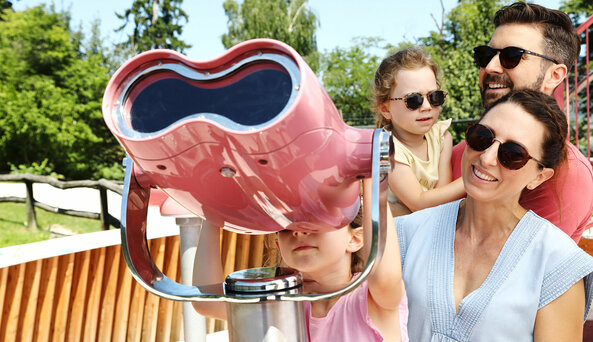
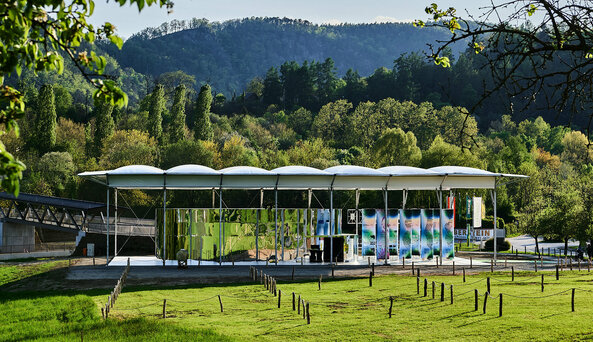
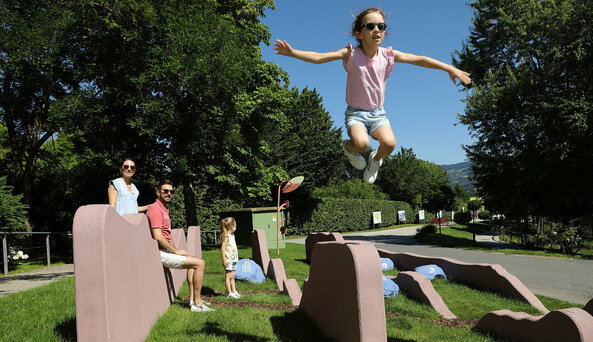
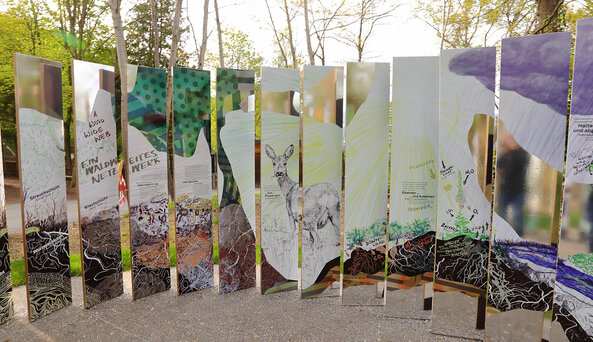
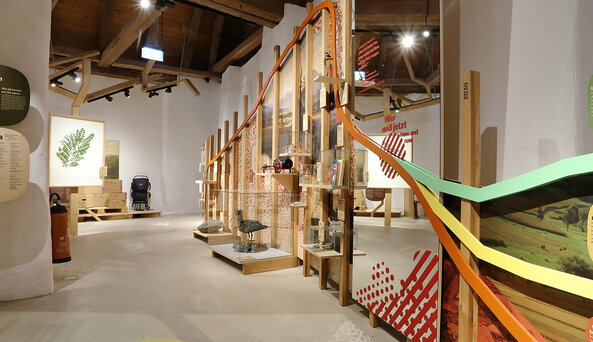
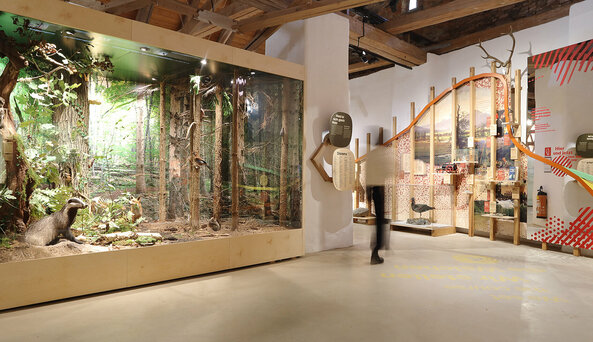
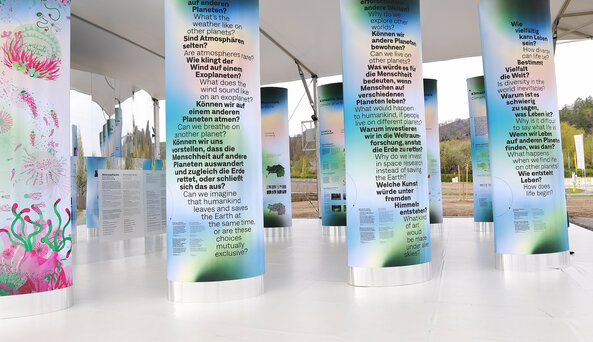
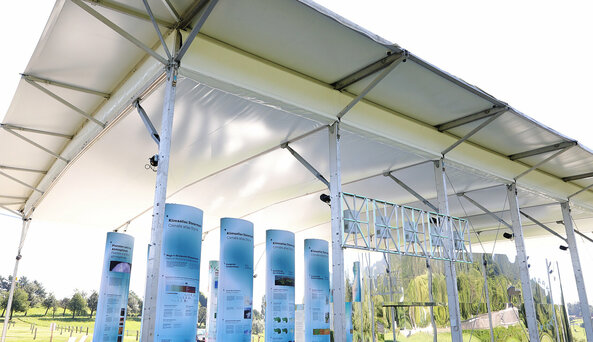
Image information

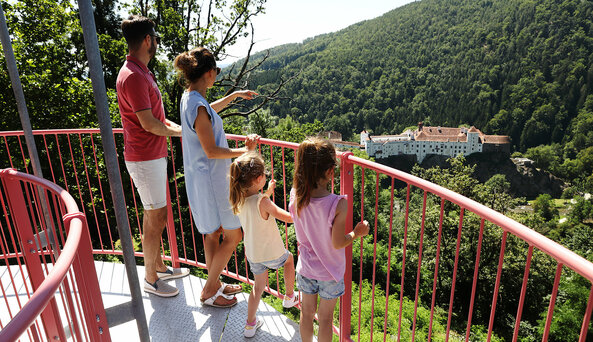
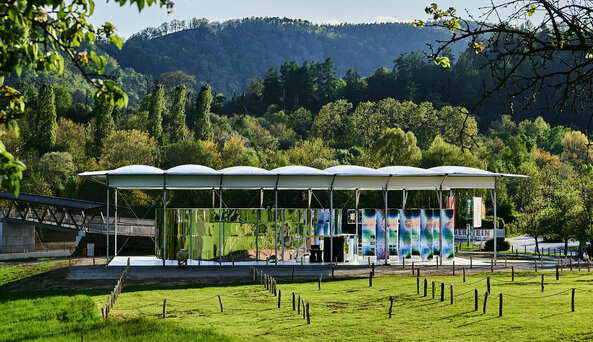
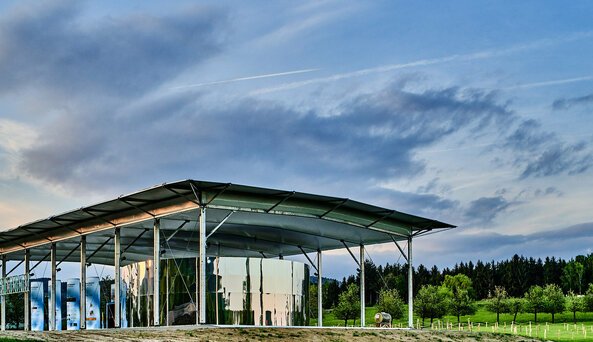
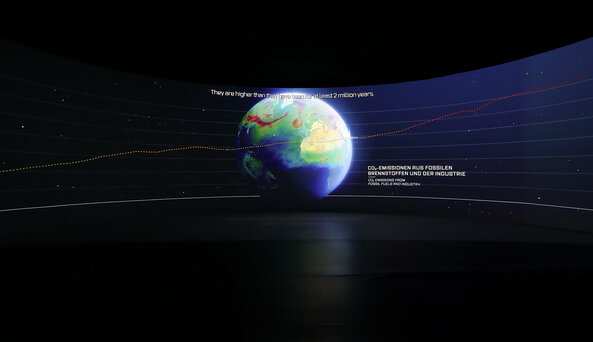
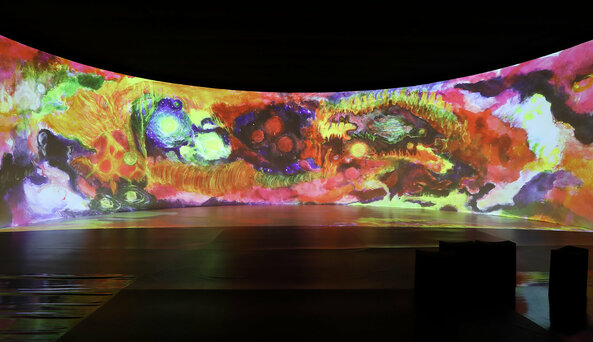
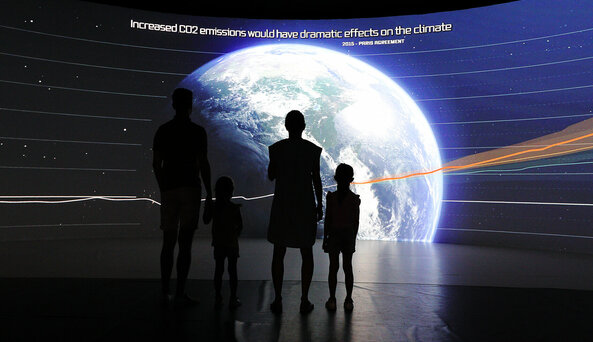
Voices on SHOWING STYRIA 2023
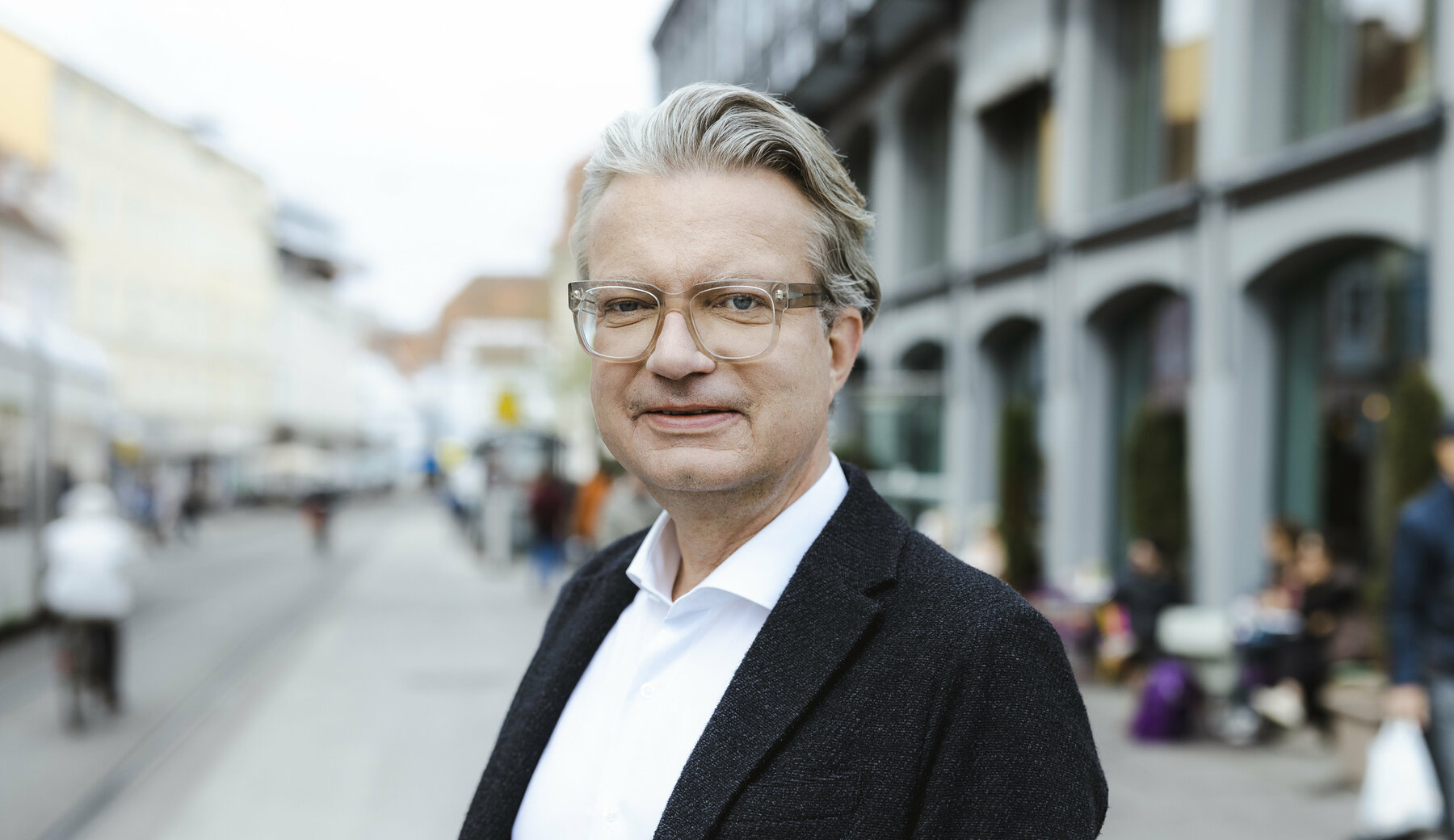
Image information

Nature holds an incredibly fascinating and impressive diversity, which is shown in a very special way in the province of Styria. "Diversity of life" is therefore a deliberately chosen theme for the continuation of SHOWING STYRIA, which was launched in 2021. After all, SHOWING STYRIA is a great declaration of love for our province. In 2021, the goal was a kind of self-reflection of everything Styrian, of our country, of the Styrians in the "exhibition of the country", which - despite the pandemic and the associated restrictions - could be realized very successfully. It was designed as a combination of scientific and cultural debate; biennially, i.e. every two years, we now want to continue this format.
The second edition of the STEIERMARK SCHAU is now planned for 2023 and I am pleased that we are able to present a highly topical, future-oriented theme. We are dedicating the STEIERMARK SCHAU 2023 to the "diversity of life" and want to proudly show how colorful and biologically diverse our beautiful homeland is. Especially now, when the challenges of all generations in dealing with the living environments of humans and animals are greater than ever before and we (have to) think about natural resources more than ever, we want to give our focus to the diversity of life. The changes to our planet are brought home to us on a daily basis. We encounter climate change in countless areas - from the Dachstein glacier to the vineyards, in endangered or already extinct species or extreme weather events with unusual severity. Therefore, the STEIERMARK SCHAU 2023 should not only be a declaration of love to our homeland in all its beauty and colorfulness, but equally a mission. A mission to protect and preserve the unique diversity of life.
The Herberstein Animal World is the predestined location for the presentation of the STEIERMARK SHOW 2023 "Diversity of Life". On the one hand, one can not only observe the diversity of life in the wonderful ambience of the zoo, but it is also located directly at the unique European nature reserve Feistritzklamm. In Herberstein, the diversity of life thus experiences an additional cumulation.
Of course, a STEIERMARK SHOW cannot reverse climate change or bring extinct species back to life. But it can shake us up and make us aware that we are all, each one of us, part of a big whole and that our actions can therefore also be part of a turnaround. Because nothing less than our future is at stake.
Christopher Drexler, Governor of Styria
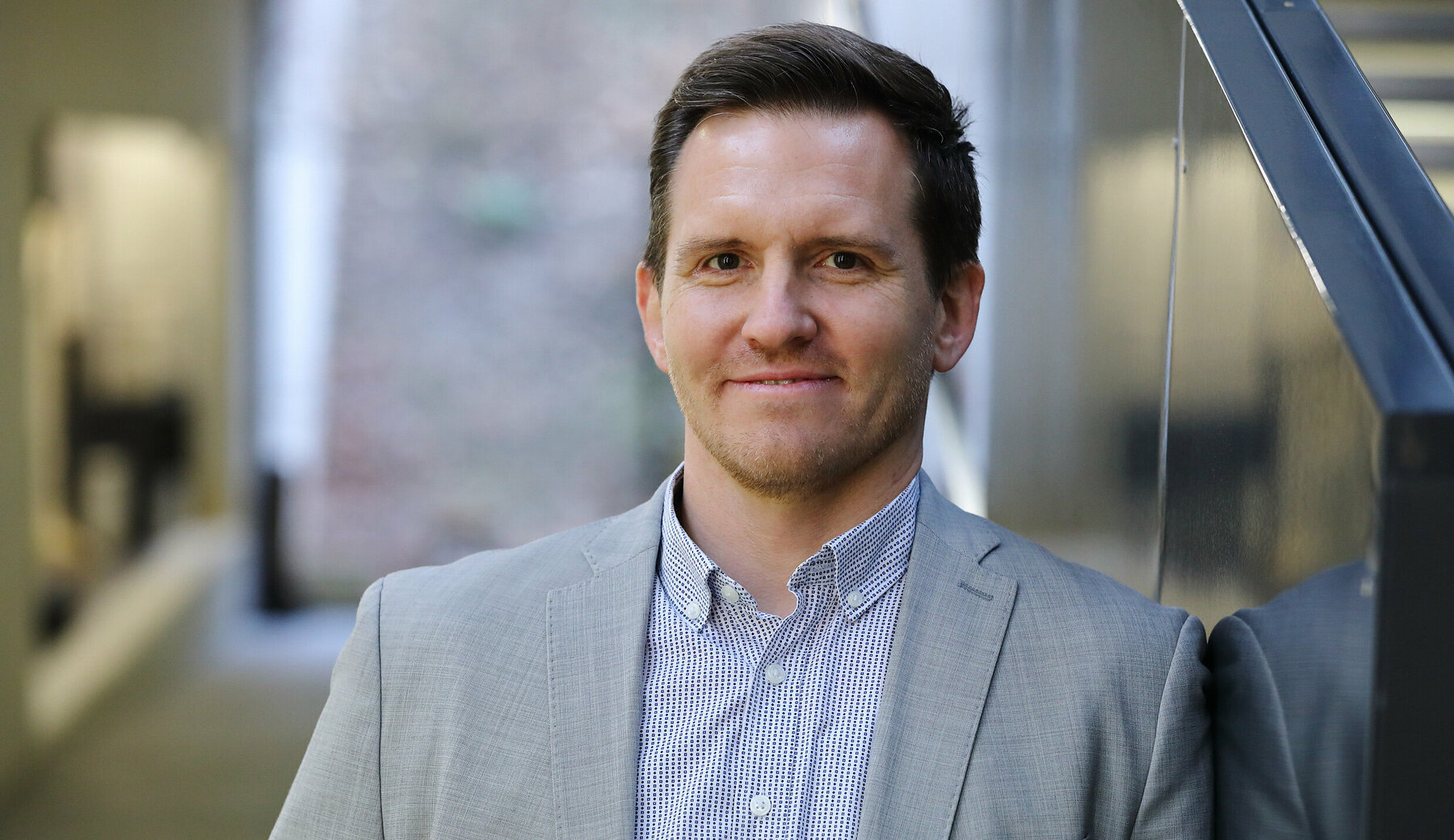
Image information

Even when Archduke Johann of Austria founded the Joanneum as the "Innerösterreichisches Nationalmuseum" in 1811, his love of nature was one of the most important driving forces. An educational institution with a natural science orientation was to be the first public museum in Austria - we still feel committed to this idea today.
In the second SHOWING STYRIA we can take up one of the most urgent problems of our time and make it more comprehensible: the loss of biodiversity. Since the incorporation of the Herberstein Animal World into the Universalmuseum Joanneum, we also have the best possible location for an exhibition like this. Because there, too, the diversity of life is shown in all its splendor and amazes visitors young and old. This should also be possible with the SHOWING STYRIA, because when we perceive the beauty of nature and realize that we are a part of it and that it forms the basis of our lives, its protection becomes non-negotiable.
The show with numerous interactive elements, natural sites and the mobile pavilion is groundbreaking in terms of modern mediation concepts and innovations. And we will need both if we as a museum are to continue to play an active role in the public discourse concerning our environment.
Marko Mele, Scientific Director Universalmuseum Joanneum
![[Translate to English:] Das Bild zeigt Alexia Getzinger.](/fileadmin/_processed_/c/f/csm_Portrait_AG_UniversalmuseumJoanneum_JJKucek_93f1f4328e.jpg)
Image information

Tierwelt Herberstein attracts 250,000 visitors every year. As an animal, nature and species conservation institution, we are committed to species conservation and participate in more than 20 domestic and international conservation breeding programs and species protection projects. I consider SHOWING STYRIA a good opportunity to expand our educational mission. The more people - especially children and young people - visit Herberstein Animal World and the House of Biodiversity, the better we will succeed in awakening an understanding for flora and fauna and the individual species.
So it's very much about raising awareness and making people aware of what they're up against: in our case, that's almost 700 animals that you can experience in Herberstein in a natural environment.
Alexia Getzinger, Manager Tierwelt Herberstein
